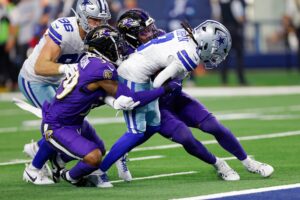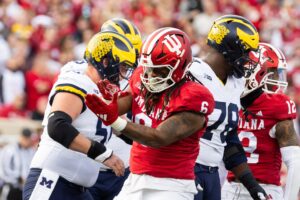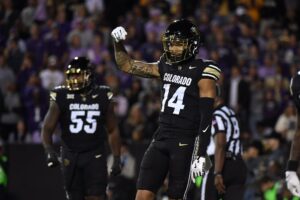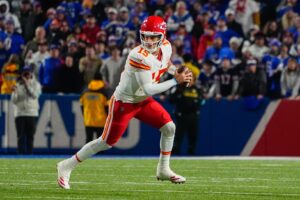In what has largely been a season to forget for the San Francisco 49ers, the emergence of tight end George Kittle has been a welcome development.
George Kittle Emergence a Positive in a Lost Season for the San Francisco 49ers
The increased production has occurred despite franchise quarterback Jimmy Garoppolo being sidelined for much of this season. With C.J. Beathard forced into the starting job, Kittle has continued to show improvement week after week with a backup quarterback delivering him passes. Kittle and Beathard have developed some nice chemistry in Kyle Shanahan’s offensive scheme after being college teammates at Iowa.
Among tight ends, Kittle ranks first in yards after the catch, is tied for first in catches over 40 yards, is second in yards per catch, tied for second in catches over 20 yards, third in yards, third in first downs, and tied for fourth in catches. Kittle has great athleticism for his size and is able to create separation for himself and allow the quarterback to complete an easy pass.
Kittle Possesses Tremendous Athleticism
Among tight ends, Kittle ranks third in average separation, measured as the distance in yards between the pass catcher and nearest defender at the time of the completion or incompletion. That type of ability is a huge luxury for a quarterback who isn’t necessarily the most accurate, and the lofty yards after catch totals that Kittle has accumulated stem directly from first creating that separation and then showing off his speed in the open field.
Kittle is always a threat to make a big play, and it’s not so much that he’s running deep routes, but that he’s catching short passes and then using his speed to eat up more yards. He’s averaging 16.5 yards per catch, which trails only O.J. Howard among qualifying tight ends. However, the average targeted air yards on passes thrown to Kittle has been just 7.1 yards. That ranks just 17th amongst tight ends. Howard ranks second amongst tight ends in that statistic for some added perspective. The threat Kittle possesses is his ability to turn short passes into long gains with his explosiveness.
Kittle leads all tight ends in yards after catch per reception and trails only Albert Wilson in that category amongst all pass catchers in the league. Kittle also leads the entire league in expected yards after catch, which is calculated by assessing every reception and estimating how many yards should be accumulated after the catch based on factors like how open the pass catcher is, how fast they’re traveling, and how many defenders are around them. The only tight end in the league who averages more yards after catch above expectation is Vance McDonald. The metrics related to Kittle’s athleticism as a pass catcher speak volumes about what he can do with the ball in his hands.
The challenge with Kittle has always been with actually catching the ball. There are still far too many moments where he isn’t able to haul in passes when he gets his hands on them.
If he can become more consistent with limiting the drops, he’s going to become one of the best tight ends in the league. His athleticism has been on full display this season, and he has elevated himself to become a serious threat that opposing defenses have to contend with.






